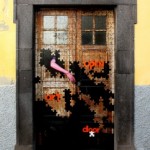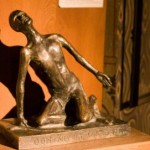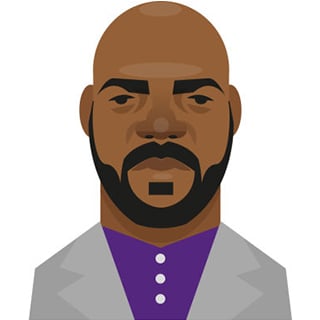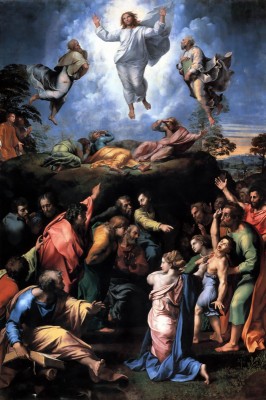 And (Jesus) was transfigured before them, and his face shone like the sun, and his clothes became dazzling white. Suddenly there appeared to them Moses and Elijah, talking with him. – Matthew 17: 2-3
And (Jesus) was transfigured before them, and his face shone like the sun, and his clothes became dazzling white. Suddenly there appeared to them Moses and Elijah, talking with him. – Matthew 17: 2-3
The Transfiguration tale is conventionally interpreted as an Easter tale, presented when Lent begins as a foretaste, a preview, of what will come at Lent’s end. But my eye and heart are drawn toward Moses and Elijah, who are part of the shining, the dazzle white light around Jesus.
If the tale is a preview, it is not a look-at-me moment, it is Jesus pointing to Moses and Elijah, who are eternal in a way he has already described to the disciples. Speaking of the burning bush, Jesus said, Moses heard God say, I am the God of Abraham, Isaac, and Jacob, and God is the God of the living, not the dead, so though Abraham, Isaac, and Jacob are dead to us, they are somehow alive to God. And that’s what Peter saw. Three men who lived in different millennia, alive to one another.
My childhood friend, caught by the spirit of Thoreau in college, studied his writings deeply in graduate school, published some in an anthology he compiled, and decades later still has Thoreau’s words in his heart and on his tongue in conversation. It’s as if he found a soul mate in another century, and they inhabit each other spiritually. Peter, who’d heard Jesus talking about the old ones, Moses and Elijah, many times, had this vision, of a spiritual unity so strong Jesus was together with them in a moment beyond time, joined in words, in heart and mind. For Jesus, Moses and Elijah were not dead, but with him in will and vision.
 When my father died, suddenly, I was awakened after only 5 hours sleep by a phone call from my hysterical mother. Sitting in my kitchen, I felt the crushing load of huge tasks ahead, exhaustion, and fear. The radio came on, chattering the world’s news and weather, the world rushing on as if nothing had happened. A good and gentle man had not earned even a momentary pause, a hush of recognition. I longed for time to stop, just stop in the moment before his final breath, so that I could hold him here with me a while.
When my father died, suddenly, I was awakened after only 5 hours sleep by a phone call from my hysterical mother. Sitting in my kitchen, I felt the crushing load of huge tasks ahead, exhaustion, and fear. The radio came on, chattering the world’s news and weather, the world rushing on as if nothing had happened. A good and gentle man had not earned even a momentary pause, a hush of recognition. I longed for time to stop, just stop in the moment before his final breath, so that I could hold him here with me a while.
After a few hours of mechanically handling tasks of leaving, chasing around for an airline ticket I could afford for that day, frantically packing, paying a few bills, arranging for things at work, I got onto my plane, dreading the trip – and suddenly all my tension left and an aura of peace came over me, in which I felt my father’s loving blessing. All was well.
My mother, never one to express vulnerable emotions, would not talk about him at all. Yet I heard her, in those first nights when she awoke and could not sleep, talking to him. And for several months before she died, five years later, the nurses said they would hear her chatting and ask, Who are you talking to? and she would reply, My dear husband – can’t you see him?
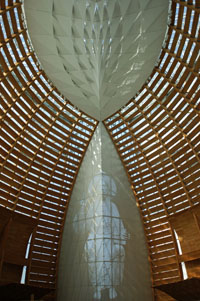 These are ordinary stories, stories of the power of love to hold life so strongly that the dead and the living make their home in one another even when separated by time.
These are ordinary stories, stories of the power of love to hold life so strongly that the dead and the living make their home in one another even when separated by time.
I had a parishioner in his 80s who spent an hour a day in the cemetery talking to his wife, weeding and tending the grass around her grave, no matter what the weather. On rainy, snowy days, I would drive over there and bring him coffee, and sometimes talk him into letting me drive him home.
A man I loved for many years, who died years ago now, still returns to me from time to time, mostly laughing, and sometimes we dance for a moment or two. The older I get, the more I am accompanied by those who are still part of me, though their earthly lives have ended. Some, like Jesus, lend me their strength and their goodwill across centuries, cultures, and all the holy mysteries.
The story of the Transfiguration holds up a red flag to our desire to set Jesus apart from all other humans and from his own Jewish tradition. In this story Jesus is deeply tied to, and draws power and holiness from, those who lived before him, whom he greatly loves, namely, Elijah and Moses. They love him, too. He is one with them, and us. He does not stand alone in the universe, nor are we alone. With is his theme, and you-are-not-alone is his testimony to so many who experience extreme isolation. The with-ness he offers is not just himself, but the deep hope and light of those who preceded him.
At the end of Matthew’s story Peter cries out that he wants to stay there, in that mystical moment. And before the words are out of his mouth, the moment is gone. Glimpses that glimmer are all we can know of time beyond time. ________________________________________________________ Illustrations:
1. Transfiguration, by Raphael, 1518, Vatican City. Vanderbilt Divinity School Library, Art in the Christian Tradition.
2. Transfiguration, by Duccio di Buoninsegna, Museo dell’Opera del Duomo, Siena, Italy. Vanderbilt Divinity School Library, Art in the Christian Tradition.
3. Transfiguration, by Craig W. Hartman, Cathedral of Christ the Light, Oakland, CA.
Vanderbilt Divinity School Library, Art in the Christian Tradition.



